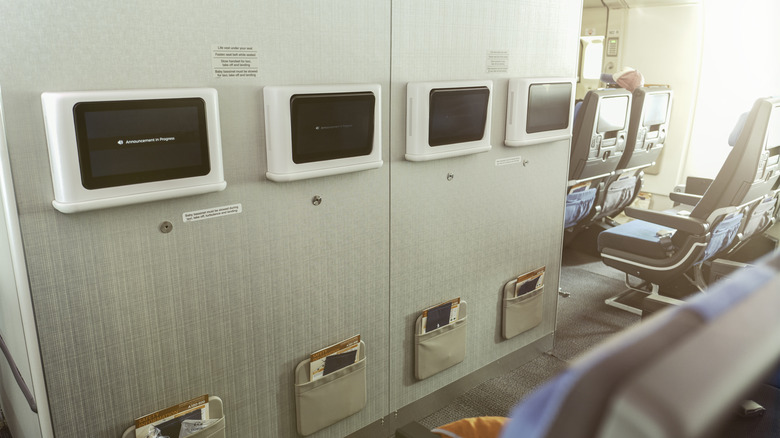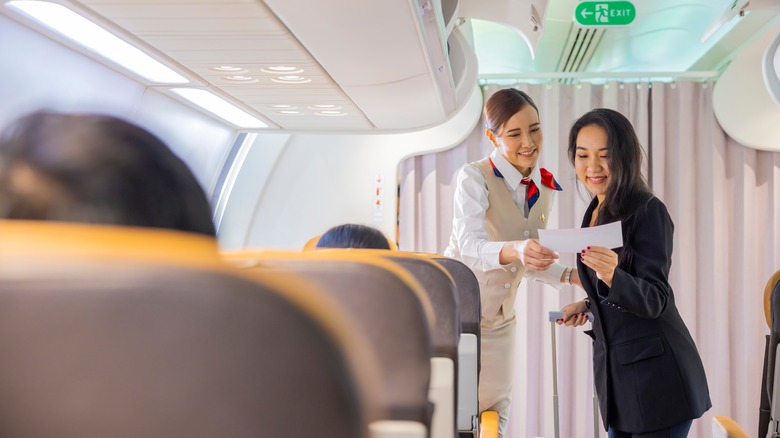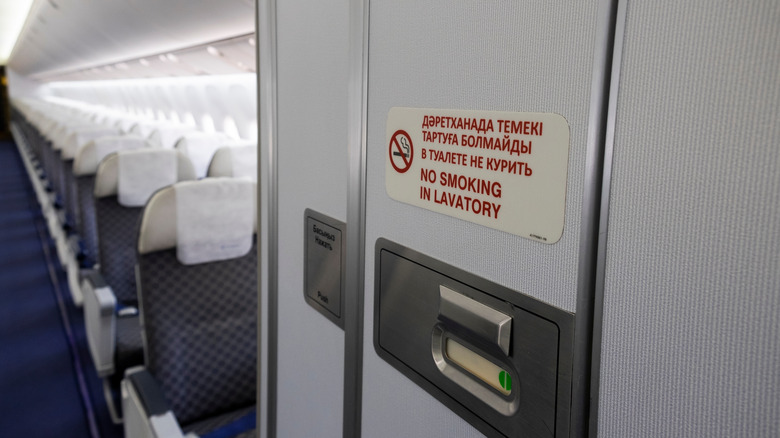Why You Should Rethink Booking A Bulkhead Seat For Your Next Flight
Travelers from across the globe often share a passion for exploration and adventure. There's also a good chance they share a common understanding that booking flights to access those adventures can be a stressful experience. There are inevitably a lot of details that go into reserving your place on a flight that instigates some amount of worry.
One factor that tends to cause confusion is how to go about scoring the best seat on the airplane. Whether you're flying for business or pleasure, where you end up settling in can change the experience for better or for worse. While it can be tempting to eye that bulkhead seat in the name of added legroom, there are plenty of reasons to rethink your approach too.
Bulkhead seats are named for their proximity to the partition that separates areas onboard a plane. This is often a solid wall, but depending on the airline you're flying with, it could also be a simple screen or even a curtain. While bulkheads can divide economy, business, and first-class seating arrangements, they also mark areas where lavatories and the galley are located.
The appeal of bulkhead seating often rests with the prospect of added space. This is a commodity every flier understandably craves. Bulkhead seats are easy to get in and out of thanks to no seating option in front and bulkhead seating luggage is always stored overhead. However, there are definitely drawbacks to this option that are easy to overlook.
The downside to bulkhead seating options
The idea of being able to easily stretch your legs out from the comfort of a bulkhead seat can be refreshing. However, it's important not to overlook the fact that extra legroom isn't always a guarantee. The reality of added space really comes down to each plane's configuration.
Some bulkhead seats are designed so close to the partition that passengers aren't truly gaining any room for their "strategic" seating choice. Those who choose an aisle bulkhead seat might be disappointed to find that added legroom is in fact cut short by an angled aisle on some aircraft. Aisle bulkhead seats can potentially put you right in the path of other passengers making their way to the back or front of the plane throughout the flight.
Another difference in bulkhead seating options is specific to tray tables. If you like drop-down trays that extend from the seat in front of you, a bulkhead tray could be an unpleasant surprise. Because there isn't a seat in front of the bulkhead row, trays are frequently stored in or next to the armrest instead.
An additional factor to consider specific to bulkhead seating that can change your flight experience is where the in-flight entertainment screens are located. While traditional seating options have screens built into the backs of the seats ahead, bulkhead rows have screens mounted to bulkhead walls instead. This can be further away than anticipated, making for less enjoyable viewing on a flight.
Consider potential points of congestion
Picking the perfect seat feels important on every flight, but it's especially vital on long-haul trips. When you're hoping to rest before landing, a bulkhead seat might seem ideal. That is until you realize just how close you are to the lavatory for the duration of your travels.
Even seasoned long-haul travelers find a lineup of other passengers near the lavatory distracting. These areas also tend to be gathering points for passengers to converse or stretch. This makes it hard to get shut-eye even with added legroom.
An overlooked feature to consider when you choose bulkhead seating is the baby bassinet. The Federal Aviation Administration recommends children under the age of two be placed in an approved child restraint system on U.S. airplanes. One of these approved devices is a baby bassinet which is generally attached to the bulkhead.
While a baby bassinet is meant to help children sleep on long flights, there's never any guarantee of success. Those who book bulkhead seats might unknowingly place themselves closer to fussy infants onboard. For business travelers looking to get in-flight work done or passengers looking forward to rest, the configuration can be particularly tricky and worth considering in advance.
Booking a bulkhead seat can provide added space, but can also present some unforeseen issues. Taking time to evaluate what's most important to you on your flight regarding overall comfort is important. You might find that a bulkhead seat simply isn't the way to go.


